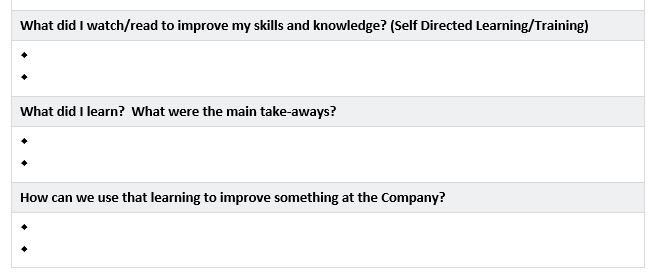Lifelong Learning: the Key to an Evolving Workplace

Every 5 years, your skills are about ½ as valuable as they were before.
Some canned goods have a longer shelf life! (I’m picturing myself rummaging through my cupboard throwing out cans, each labelled with a skill I’ve accumulated over the years, half of which are no longer useful to me. The thought hurts a little.)
We’re rolling into the year of 2020 and the only constant is change. Technology, employees, and company direction; it’s all changing. How do we respond to this modern workforce? Continuous learning, constant learning, continual learning, lifelong learning – whatever you want to call it, it’s a concept we should all be familiar with.
In order to not only harvest the benefits of technology but survive in the marketplace, companies and employees need to practice and encourage a continual learning culture in order to stay competitive.
What is lifelong learning?
Well, it's just what it sounds like. It's an ongoing effort to expand your skill set and improve your knowledge in response to a changing environment and new developments.
The modern workforce is already curious. 74% of employees say they want to learn during their spare time at work. For businesses, continuous learning is about encouraging your employees to constantly learn.
How to encourage lifelong learning
We won’t include the obvious in this list: Provide Learning Resources.
Define the current skills required
Use the Skills Gap Assessment Form to determine the gap in skills required to do the current job.
Define the skill sets of positions and developmental paths
While employees want to learn, they may need some direction in what they need to learn to grow into new roles. Make skill sets of job descriptions publicly available throughout the company to motivate employees to learn skills of positions they aspire to move into.
Provide Learning Resources
The easy obvious here would be to say that resources should be provided to employees by the employer. The truth is that formal or third-party training isn’t cheap – at all - and many small businesses don’t have the resources to provide these resources. Providing them in many cases would mean having to reduce headcount or eliminating other benefits. The negative for small business is also the absorption of training employees only to have them leave shortly afterwards with no ROI. (sorry, that’s just the reality!).
The alternative is for managers to point employees to free or inexpensive learning resources such as books or web tools. Managers can also enter into an arrangement with an employee to reduce their salary and provide more formal and costly training resources - which is not a taxable benefit. Or, if your small business does want to provide more costly training, consider entering into a training reimbursement agreement with the employee.
Provide time to learn during the work day
Offer company-wide set learning time. This may be 1 or 2 hours a week that becomes an integral part of the work week. The learning time should be staggered to ensure that not everyone is on learning break at the same time!
Make learning goals as important as performance goals
Unless you connect learning to work performance, learning goals will always fall second to work goals. Set KPI’s with employees during performance reviews. Set SMART goals. For example, “Complete chapter 3 of Moz: The Beginner’s Guide to SEO by end of month” is more effective than “improve SEO skills”. See an example performance review form that incorporates learning into the performance review process.
Lunch and Learn
A learning culture doesn’t only encourage solo activities. Encourage your employees to share their learning with others as a way to give back. Consider a monthly lunch and learn where an employee presents to other employees on a topic that is of interest to a certain group of employees. Presenting in this way also encourages a culture of “feel the fear and do it anyways”!
Include learning disclosure in Status Reports
If you use status reports to understand your employee’s weekly accomplishments, be sure to include a box to describe the employee’s weekly learnings. The form may include an area that reads something like this:
Reward and recognize learning as an achievement
Whether it’s a small gift or time off, choose rewards that matter most to your employees. Appreciate those who learn new skills and make the effort to continually enhance their knowledge to support their work and therefore your company.
Why lifelong learning is important for your business
Creates a workforce that is responsive to an ever-changing world
Providing an environment that practices lifelong learning will help your employees adapt to unexpected changes. By continuing to learn, they’ll more easily step out of their comfort zone to learn and adapt to new technologies, practices or industry developments.
Avoids short sightedness
You can’t have a stagnant workforce. Through continual learning, you’ll have a team of workers who constantly push your business forward.
Enables skills sharing
Creating an environment that allows employees to share, discover best practices and learn from past mistakes is essential.
Creates internal career progression opportunities
Sustaining a continuous learning culture means you’re training your employees for future opportunities within your business. This will reduce employee turnover and save resources, time and money.
Final Word
Lifelong learning is no longer a nice to have but a need to have. It's a culture that you can integrate and teach in your workplace.
Throw out those expired cans and restock that cupboard baby!



